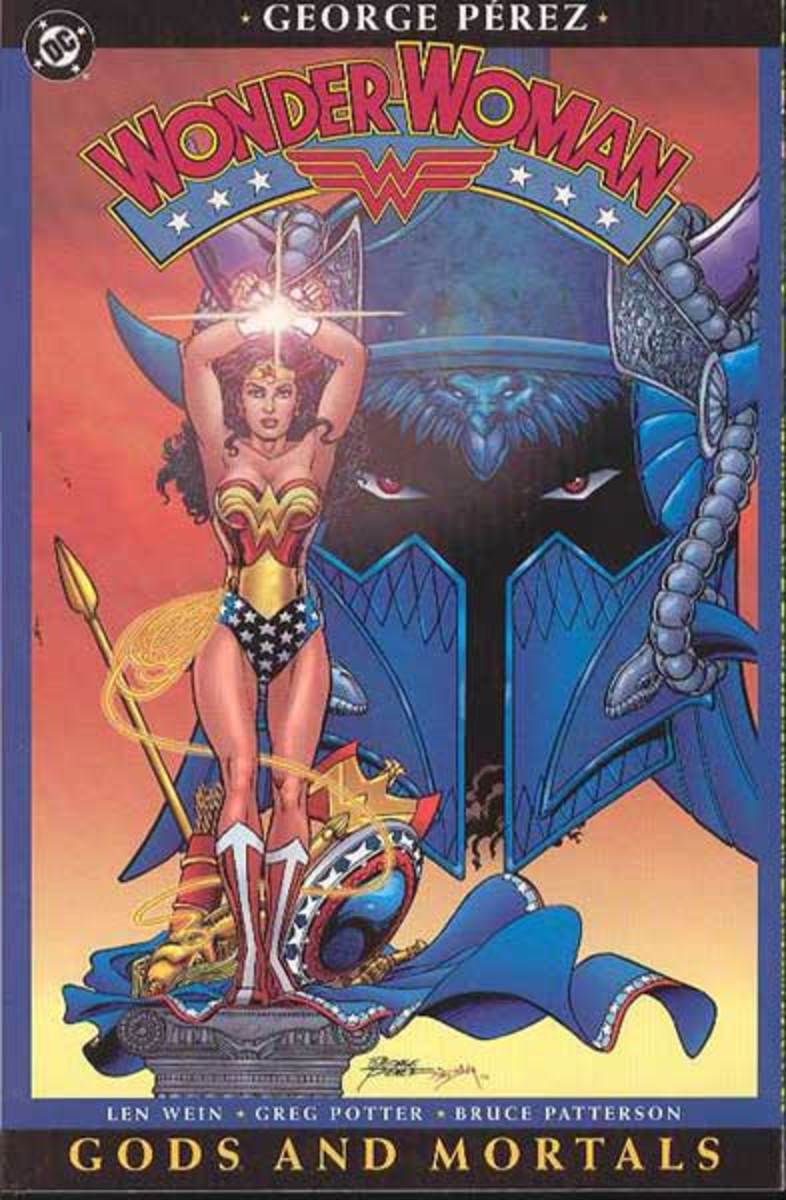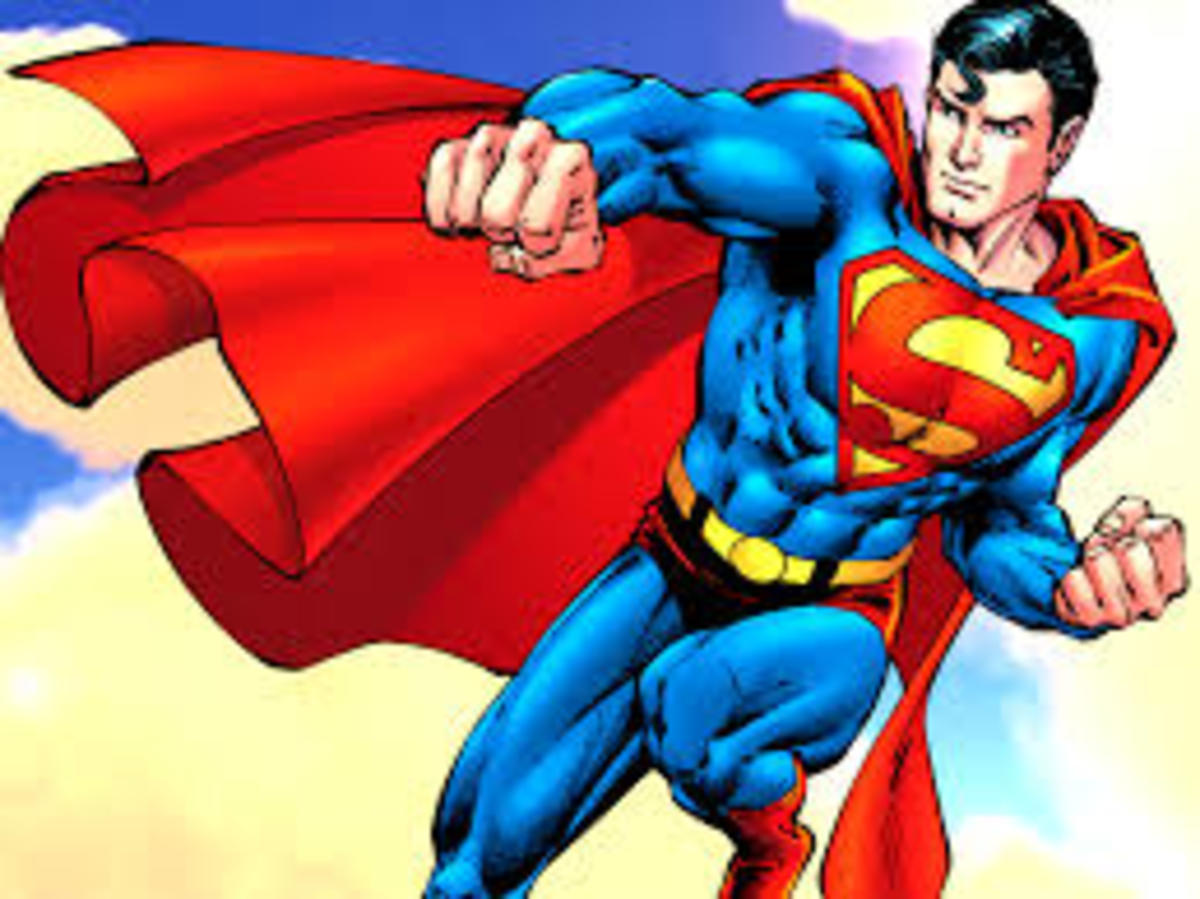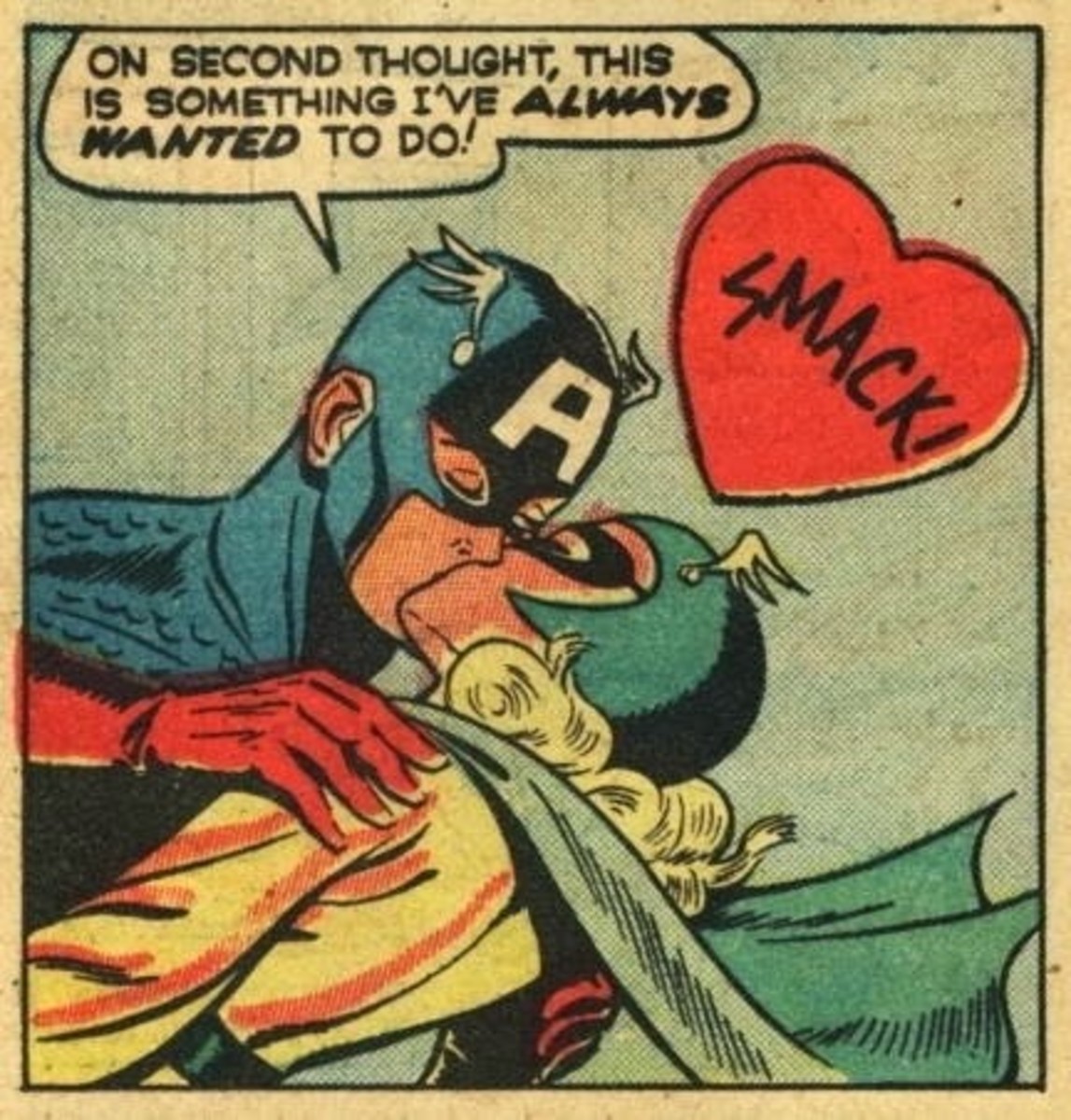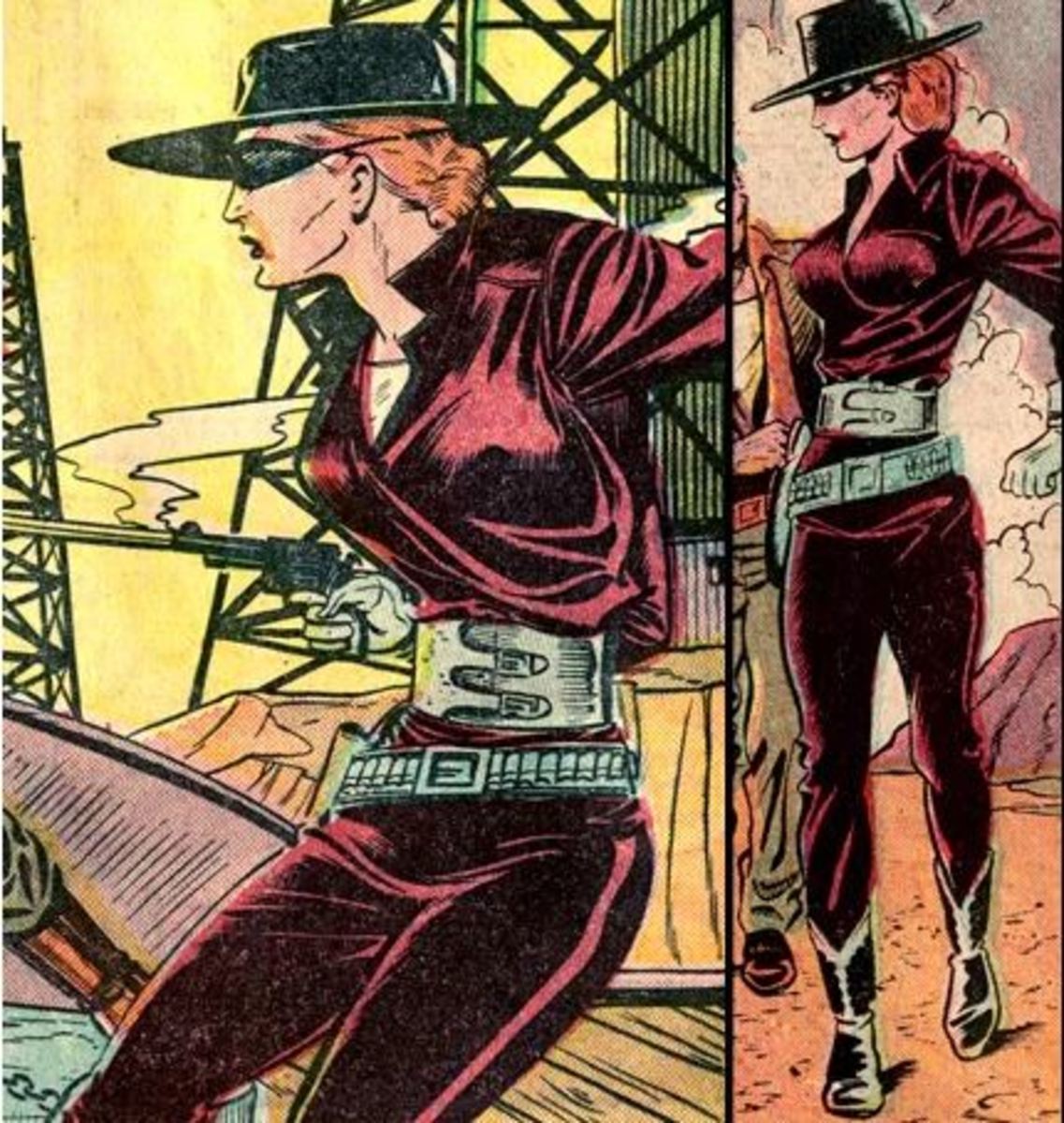DC Comic Reboots
DC Comics has been around for a long time. It was created in 1934 as National Allied Publications but they would soon change their name to Detective Comics. Although the name was quickly shortened to DC, it would not become official until 1977. Through this long life, they have been a part of important moments in comic book history. When Superman was introduced in Action Comics #1, the superhero genre we know today was created. Batman gracing the pages of Detective Comics #27 the following year would prove audiences were hungry for more of this genre.
The comic book world may be a fictional representation of our own, but it must still change with the times. It might be easy to dismiss Batman not being over 70 years old, but it becomes harder to explain storylines that don’t match up with modern culture or historical events that severely date a character. Yes, Superman might be immortal and could have fought the Nazi’s in World War 2, but why is Jimmy Olsen still so young. How does the gritty world of Batman for the modern reader, fit into the Batman Family, complete with Ace the Bat Hound? A strong female character like Wonder Woman should not have a character description in her first appearance read, “Always the woman. Diana window shopping”. Yes, that is a direct quote from Sensation Comics #1.
Some continuity issues had nothing to do with dated material but a lack of consistency with the characters themselves. Superman went from literally being able to leap tall buildings in a single bound (he could jump an eighth of a mile), to gaining the ability to fly. The Green Lantern Ring evolved from a magic item, to an alien technology. Origin and power inconsistencies plagued the DC Universe.
Rather than freezing a World War 2 soldier or having an interdimensional being wipe out parts of one character's backstory, DC Comics likes to rewrite their entire universe and start from scratch. A handful of characters may remember the old reality, but as a whole they start with a clean slate. This allows the creators to clean up inconsistencies that have developed over the years and update their characters for a new generation of readers. It took 50 years for DC to employ this strategy for the first time with the Crisis on Infinite Earths miniseries. Now they tend to reboot their comic universe every ten years or so.
Warning!!!
*Although not all plot points are given away, these recaps do retell the major events of the story and include spoilers.
Crisis On Infinite Earths
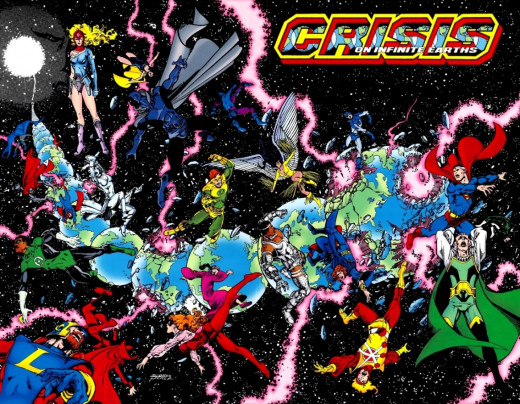
Crisis Tie-in Issues
- All-Star Squadron #50-57
- Amethyst (vol. 2) #13
- Batman #389-391
- Blue Devil #17, #18
- DC Comics Presents #78, #86-88, #94-95
- Detective Comics #556, #558
- The Fury of Firestorm #41-42
- Green Lantern (vol. 2) #194-196, #198
- Infinity, Inc. #18-25, Annual #1
- Justice League of America #244-245, Annual #3
- Legion of Super-Heroes (vol. 3) #16,18, Annual #1
- Losers Special #1 (note:first official post-Crisis story)
- Tales of The Teen Titans #58
- The New Teen Titans (vol. 2) #13-14
- The Omega Men #31, #33
- Superman #413-415
- Swamp Thing (vol. 2) #44, #46
- Wonder Woman #327-329
Post-Crisis Tie-in Issues
- All-Star Squadron #58-60
- Green Lantern (vol.2) 199-200
- Infinity, Inc. #27, 30
- Justice League of America #246
- Last Days of The Justice Society Special #1
Legend of Wonder Woman #1-4
Year: April 1985-March 1986
# of Issues: 12
Writer: Marv Wolfman
Penciler: George Pérez
After 50 years, this series shook the DC Universe to it’s core. It did away with the Multiverses and killed over 60 characters. Granted, many of these were just variations of different characters or brought back to life later, but some had more lasting impacts, such as the death of Barry Allen and Supergirl. These events lived up to the marketing tagline of "the DC Universe will never be the same."
The Monitor was introduced in the DC Universe two years before the Crisis On Infinite Earths series was released. Readers believed he was a villain but it turns out that the Anti-Monitor was the true supervillain. These two god like beings were created with the Multiverse. The Anti-Monitor has been destroying Earths in alternate realities in his attempt to become the ultimate ruler of everything. In a desperate attempt to stop this from happening, The Monitor plans to merge the surviving Earths together and assigns superheroes to defend the “tuning forks” he will use to accomplish this task. Of course, with a twelve part miniseries nothing goes according to plan. The Monitor’s assistant, Harbinger, kills him and our heroes from several parallel Earths must find a way to save the day. As if this threat was not big enough, many of the DC supervillains are trying to conquer the Earths a well. Later, the villains realize the fate of the universe and join the heroes in their attempt to stop Anti-Monitor in a battle that spans parallel Earths, a limbo universe, and goes back to the dawn of time. When the story concludes, the five Earths are joined together and the only people who remember the previous reality were the handful of characters involved in the battle that occurred at the dawn of time.
Zero Hour: Crisis In Time
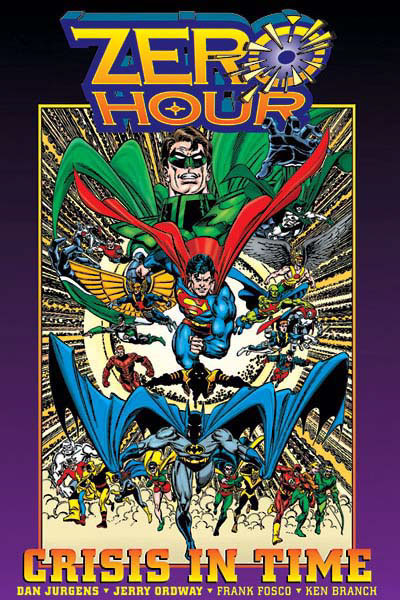
Zero Hour Tie-in Issues
- Action Comics #703
- The Adventures of Superman #516
- Anima #7
- Batman #511
- Batman: Shadow of the Bat #31
- Catwoman vol. 2, #14
- Damage #6
- The Darkstars #24
- Detective Comics #678
- Flash vol. 2, #94
- Green Arrow vol. 2, #90
- Green Lantern vol. 3, #55
- Guy Gardner: Warrior #24
- Hawkman vol. 3, #13
- Justice League America #92
- Justice League International vol. 2, #68
- Justice League Task Force #16
- L.E.G.I.O.N. '94 #70
- The Legion of Super-Heroes vol. 4, #61
- Legionnaires #18
- The Outsiders vol. 2, #11
- Robin vol. 2, #10
- The Sandman vol. 2, #51-56
- Showcase '94 #10 (Prelude)
- Steel vol. 2, #8
- Superboy vol. 3, #8
- Superman vol. 2, #93
- Superman: The Man of Steel #37
- Team Titans #24
- Valor #23
Year: 1994
# of Issues: 5
Writer: Dan Jurgens
Penciler: Dan Jurgens
Inker: Jerry Ordway
Crisis on Infinite Earths cleared up a lot of the DC Universe history, but many stories not only take place in the past and present but also the future. Zero Hour was created to clean up some the inconsistencies found in future timelines. It was also used to fix some of the continuity problems not addressed by Crisis or occurred because of it. The biggest discrepancies brought about by Crisis was DC using older versions of their heroes after the story concluded, until the “new” characters were slowly released into the universe. This took years and caused a lot of confusion.
For Zero Hour, time is being compressed and characters from alternate realities start popping into the DC Universe. Some are new characters like Alpha Centurion and others are versions of characters we know like Batgirl. As time compresses, it is being followed by a wave wiping out reality from the end of times to the dawn of times.
A temporal rift destroying time was created by Hal Jordan, a former Green Lantern who is now going by the name Parallax. Hal went insane after his hometown of Coastal City was destroyed by Cyborg and Mongul, during the Reign of the Supermen storyline. That was followed by the Emerald Twilight saga, in which Hal destroyed the Green Lantern Corps and absorbed their powers. Zero Hour: a Crisis in Time deals with Parallax attempting to erase the events that led to the destruction of Coast City and recreating the universe as he deems appropriate. Remember this was a reboot series, so the universe was destroyed by Parallax, but Damage’s powers helped spark a new Big Bang and the universe was able to evolve naturally instead of through Parallax’s influence.
Sticking with the Zero Hour theme, the series started at issue #4 and went down to #0. For the last book, a fold-out timeline was put on the back cover to show when key events happened within the universe. When Zero Hour concluded, all ongoing comic book series also published a #0 issue. These issues were used to retell or clarify the official origin of their respective heroes for the new timeline. Although some comics started over at #1 after their #0 issue, others continued where they had left off.
Infinite Crisis
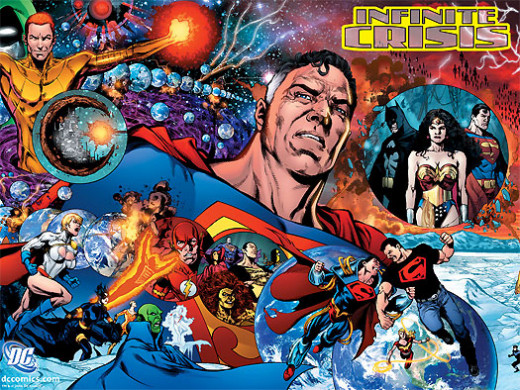
Infinite Crisis Tie-in Issue
- Action Comics #836
- Adventures of Superman #643, 645, 648, 649
- Superman #219, 220, 225, 226
- Teen Titans #33
- Teen Titans Annual #1
- Wonder Woman #221
- Infinite Crisis Special: Day of Vengeance #1
Year: December 2005-June 2006
# of Issues: 7
Writer: Geoff Johns
Penciler: Phil Jimenez, Jerry Ordway, George Pérez, Ivan Reis
Just like Crisis on Infinite Earths created continuity issues, so did Zero Hour. Most of these problems occurred because DC left storylines and characters in their Universe that required alternate timeline or a Multiverse, both of which were supposedly wiped from DC’s canon. They tried creating a “Hypertime” to address these issue, but this did not satisfy fans or the DC staff. In 2005, Infinite Crisis was created to clean up the Universe and reintroduce some of the concepts used before the Crisis storylines began, such as the Multiverse.
DC started to plant the seeds of Infinite Crisis when they killed Donna Troy, two years before the series began. In May of 2005, the 80 page Countdown to Infinite Crisis one shot comic was released and the story arc would officially begin. This was quickly followed by four, six-issue miniseries (The OMAC Project, Rann-Thanagar War, Day of Vengeance and Villains United) and one, four-part miniseries called DC Special: The Return of Donna Troy. In December of 2005 the Infinite Crisis miniseries would begin and once again conclude with a drastic change to the DC Universe.
Kal-L (Earth-2), Lois Lane Kent (Earth-2),Superboy (Earth Prime) and Alexander Luthor Jr. (Earth-3), who have been in the alternate reality of “Paradise” since the conclusion of Crisis on Infinite Earths, return to the present day DC Universe. They wish to create a better Earth. As it turns out, Alexander and Superboy-Prime have been leaving Paradise for a while to create an inter-dimensional tuning fork by using the remains of the Anti-Monitor and heroes/villains from the alternate universes. Alex successfully creates more Earths and then attempts joining several to create a perfect Earth. While Alexander is creating new Earths, Superboy-Prime is causing destruction on the current Earth. He has killed several heroes and villains and eventually flies off to Oa, where he wants to collapse the Universe and rebuild it, so he is the only one with Superpowers. He kills several Green Lanterns before Kal-El and Kal-L are able to stop him.
After the events of Infinite Crisis, DC comic titles picked up one year after the event. To fill in readers on the events between Infinite Crisis and One Year Later, a weekly comic was released titled 52. 52 issues were released for one year and showed what happened each week, in order after Infinite Crisis.
Although more Crisis storylines would follow that involved the entire DC Universe, they did not involve rewriting DC history on a major scale. Yes, Countdown to Final Crisis and Final Crisis destroyed the universe, but it was brought back to “normal”.
Flashpoint
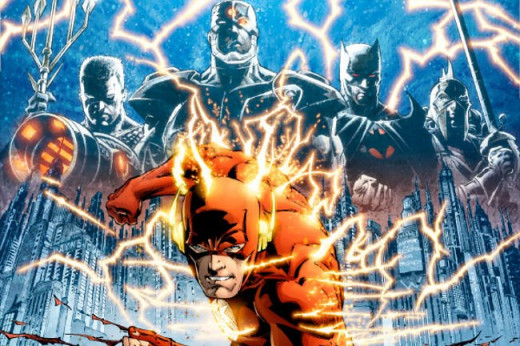
Pre-Flashpoint Tie-in Issue
- Time Masters: Vanishing Point #1-6
- The Flash #8-12
Flashpoint Tie-in Issues
- Booster Gold #44-47
- Flashpoint: Emperor Aquaman #1-3
- Flashpoint: Batman Knight of Vengeance #1-3
- Flashpoint: Deadman and the Flying Graysons #1-3
- Flashpoint: Citizen Cold #1-3
- Flashpoint: The Outsider #1-3
- Flashpoint: The Canterbury Cricket #1
- Flashpoint: Deathstroke and the Curse of the Ravager #1-3
- Flashpoint: Kid Flash Lost #1-3
- Flashpoint: Grodd of War #1
- Flashpoint: Reverse-Flash #1
- Flashpoint: Frankenstein and the Creatures of the Unknown #1-3
- Flashpoint: Green Arrow Industries #1
- Flashpoint: Abin Sur - The Green Lantern #1-3
- Flashpoint: Hal Jordan #1-3
- Flashpoint: Secret Seven #1-3
- Flashpoint: Project: Superman #1-3
- Flashpoint: Lois Lane and the Resistance #1-3
- Flashpoint: Legion of Doom #1-3
- Flashpoint: Wonder Woman and the Furies #1-3
- Flashpoint: The World of Flashpoint #1-3
Year: 2011
# of Issues: 5
Writer: Geoff Johns
Artist: Andy Kubert
Rather than the major motivator for rebooting the DC Universe be fixing inconsistencies, this time around DC was looking for a way to revitalize their comics and make them more relevant to modern readers.
The story begins with Barry Allen/Flash waking up in an alternate timeline. The changes to his own life are drastic and so are those to the heroes readers have known all these years; Bruce Wayne was shot as a child and it was his father, Thomas Wayne, who took on the role of Batman, Wonder Woman and Aquaman’s people are at war with each other and devastating the world around them, and Superman was taken to a government facility as a child, so never became the hero he was destined to be. The only people who recognize that reality has changed and remember the old timeline are Flash, Reverse-Flash, Booster Gold and Skeets.
Barry Allen discovers that he caused the current reality when he went back in time to stop Eobard Thawne/Reverse-Flash from killing his mother. Flash absorbed all the of Speed Force into his body and in the process completely altered time. With the knowledge of how, where and when the timeline was altered, Flash is able to reset history again. However, when Flash travels through time, he notices the three separate realities of DC, Wildstorm, and Vertigo. Pandora gives a cryptic explanation to Barry saying that these universes were divided to weaken them for an upcoming threat. Barry wakes up from a sleep to a new timeline with the three universes combined and complete memories of the alternate reality he had just been to.




